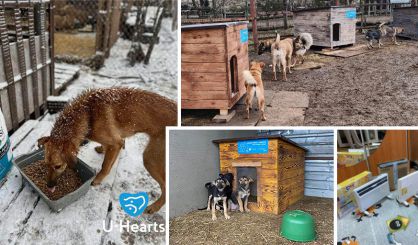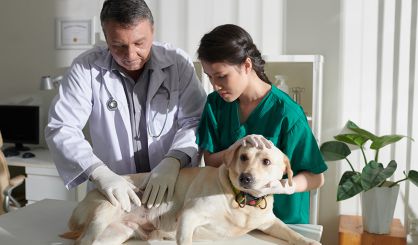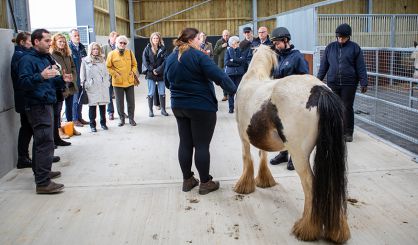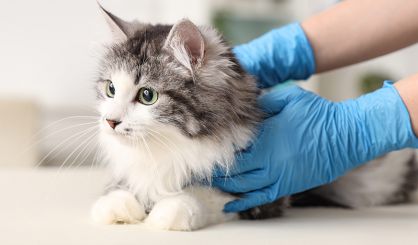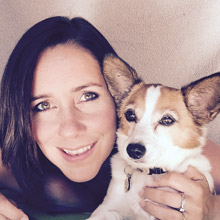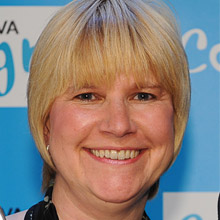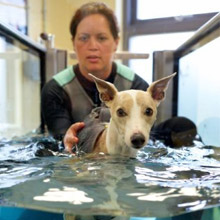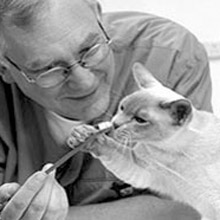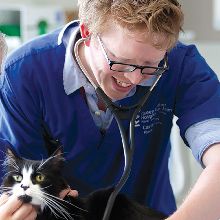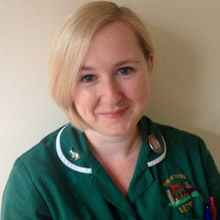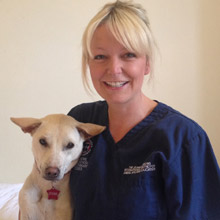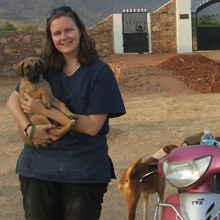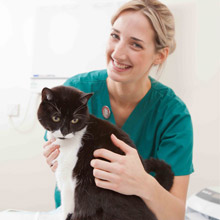Clinical Abstracts and blogs
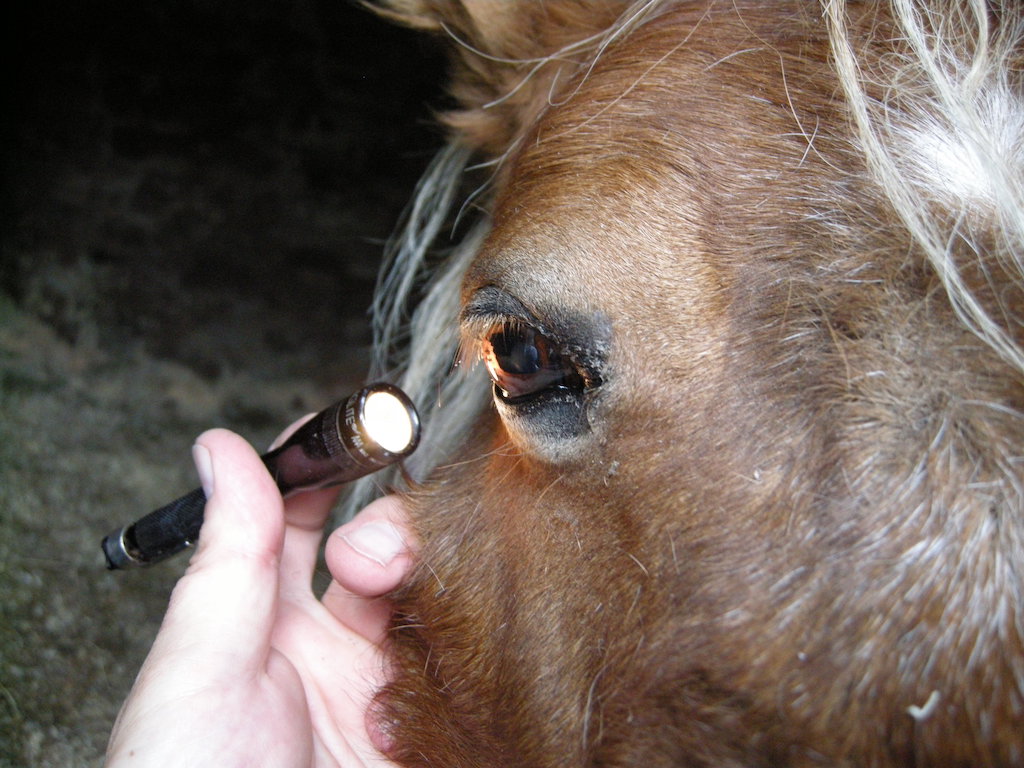
Eye problems in the horse
The size and prominence of the equine eye means that disease and injury to the eye are common occurrences. Many...

Locating neurological lesions
Whilst neurology is an area of specialisation, most neurological lesions initially present in first opinion practice. Therefore, every general...
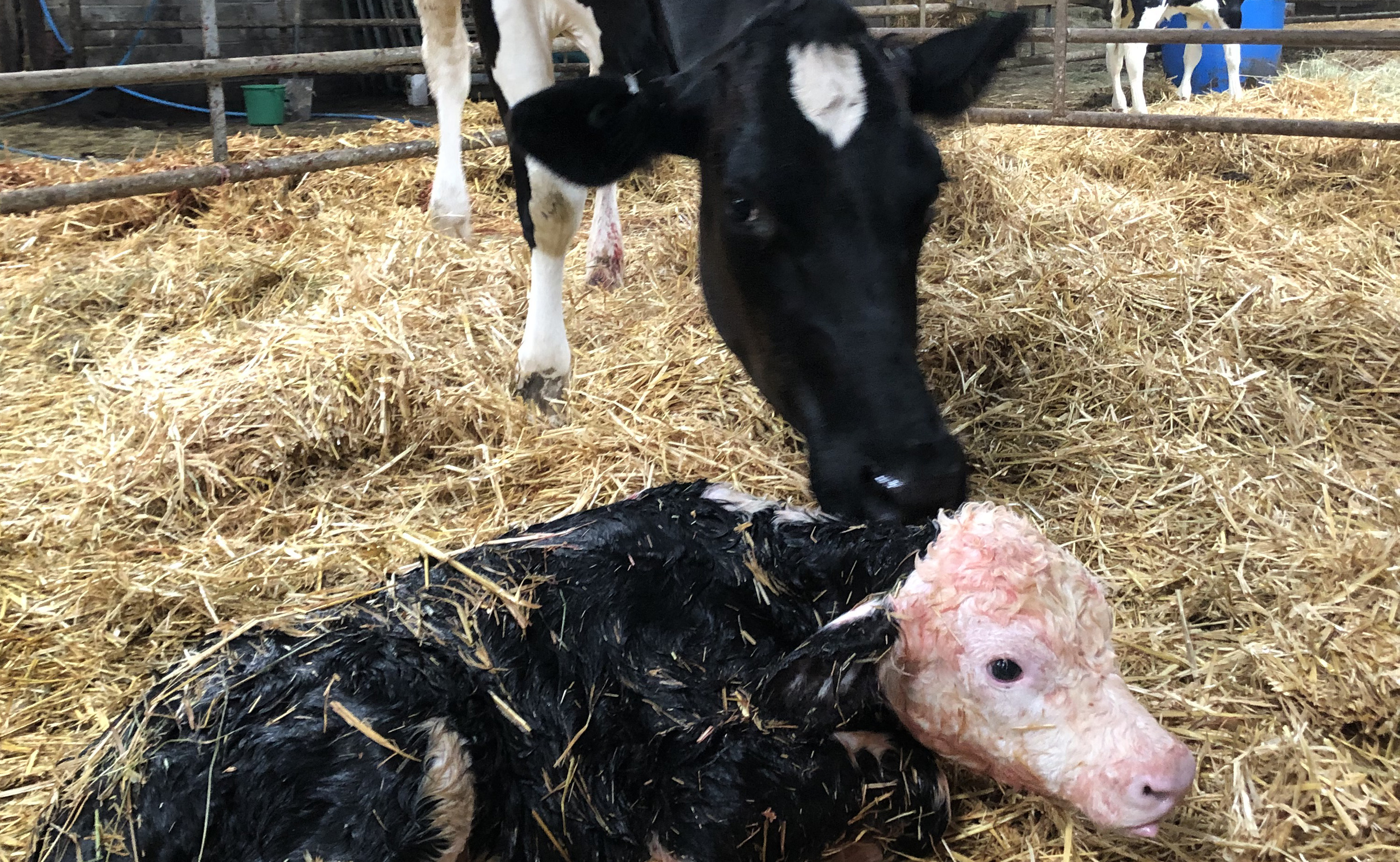
Common calving problems
The objectives for managing a cow at calving should be the same regardless of whether the cow is in a...
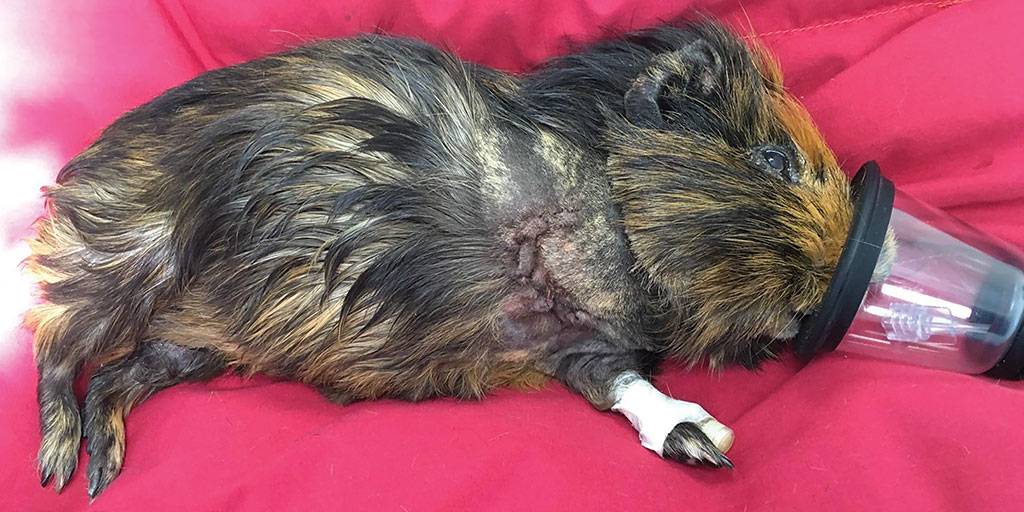
A forelimb amputation in a guinea pig with osteomyelitis
Guinea pigs are commonly-owned, exotic small mammals and present frequently to veterinary surgeons in general practice. Small mammal limb injuries...

Poisoning – the bigger picture: pigs, sheep, goats and horses
The Veterinary Poisons Information Service answer enquiries about any animal – big or small – and although larger animals represent...

Team member disputes – managing difficult employment relationships before they affect the wider practice
Stephenie Malone, specialist employment solicitor at Harrison Clark Rickerbys solicitors, discusses team member disputes in the veterinary practice. Difference and...
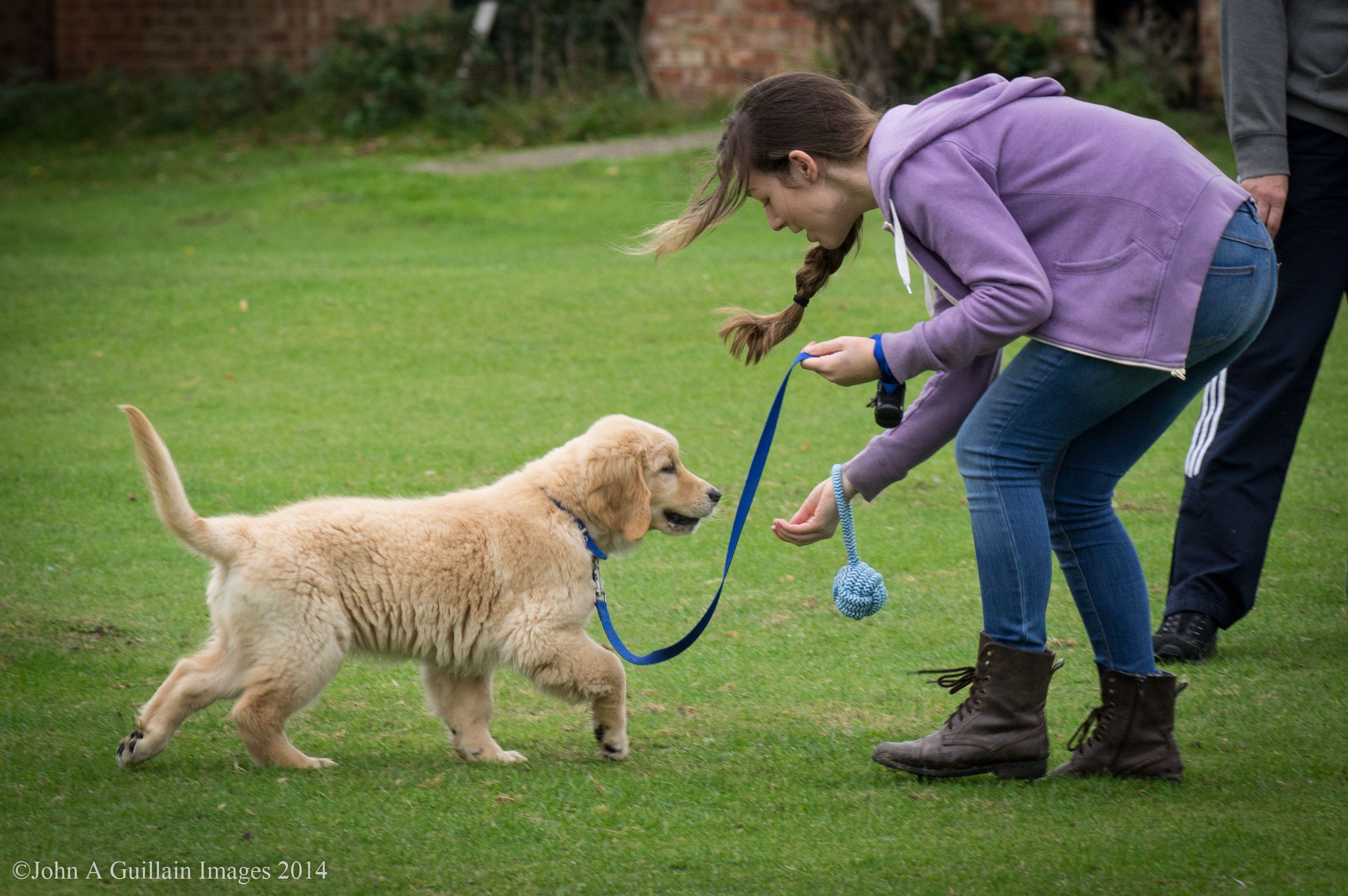
Whom to choose? Clearing confusion about appropriate behaviour and training referral services
In this article, Karen Wild, ASAB-Certificated Clinical Animal Behaviourist, explores the options for veterinary surgeons, veterinary nurses and owners regarding the...
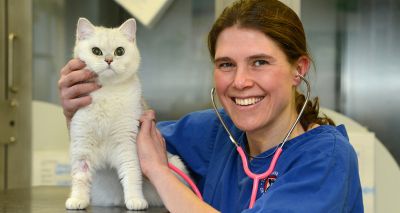
Vet becomes first woman to complete Barkley Marathons
A veterinary surgeon from Scotland has become the first woman to complete the 100-mile Barkley Marathons.
Jasmin Paris finished the race, which has a 60-hour time limit, in 59 hours 58 minutes and 21 seconds.
When not competing in ultramarathons and other endurance events, 40-year-old Dr Paris works as a small animal veterinary surgeon and senior lecturer at the Royal (Dick) School of Veterinary Studies.
The Barkley Marathons race is held each year at Frozen Head State Park, Tennessee, USA, and features a series of unusual customs. The race begins when the race director lights a cigarette. The runners then attempt to complete five loops of the 20-mile track.
On the way, the competitors have to rip out pages from books placed along the course to prove that they have followed the route.
Since it began in 1986, only twenty people have finished the race within the time limit. When she competed in 2022, Dr Paris achieved three loops of the race. The next year, she became the first woman to attempt a fourth loop, but was unable to complete it in time.
Dr Paris has previously set records in a number of endurance events. Among her many achievements, she set a new race record for the 268-mile Spine Race across the Pennine Way in 2019 and has broken records in the Paddy Buckley Round and the Bob Graham Round.
Peter Mathieson, principal and vice-chancellor of the University of Edinburgh, said: “It is an honour to call Jasmin a colleague and we were all delighted to hear the news from the Barkley Marathons.
“Everyone at the university sends their huge congratulations to Jasmin. She is truly an exceptional sportsperson and is an inspiration to our whole university community.”
Image © University of Edinburgh

RCVS Knowledge appoints Veterinary Evidence editor-in-chief
RCVS Knowledge has welcomed Professor Peter Cockcroft as editor-in-chief for Veterinary Evidence.
A world-renowned expert in evidence-based veterinary medicine, Prof Cockcroft will lead the strategic development and editorial quality of the open-access journal. He was previously in the role from 2017-2020.
Katie Mantell, CEO of RCVS Knowledge, said: “We are excited about the extensive knowledge of evidence-based veterinary medicine and clinical veterinary research that Peter brings, and we look forward to working with him over this next phase of the journal’s development.”
Image © RCVS Knowledge

CVS Group hit by cyber attack
CVS Group, which owns more than 450 veterinary practices in the UK, has been hit by a cyber attack.
In a statement, the group said the incident involved unauthorised external access to a limited number of its IT systems. As soon as the attack was discovered, the group took its IT systems temporarily offline, causing ‘considerable operational disruption’.
It has warned that the security steps taken and ongoing plans to move its operational systems and IT infrastructure to the Cloud are likely to have an ongoing impact over a number of weeks.
Due to the risk that personal information was accessed, CVS has informed the Information Commissioner’s Office. The company is working with third party consultants to investigate the incident.
Image © Shutterstock
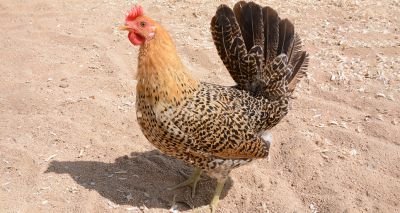
Avian flu impact puts poultry rare breeds under threat
The Rare Breeds Survival Trust (RBST) has moved all of the UK’s native poultry breeds into the ‘priority’ category of its annual watchlist.
The move has been made due to the significant impact on breeding programmes in recent years from the combination of avian influenza restrictions and the rising cost of animal husbandry.
The latest watchlist has also highlighted the plight of native pig breeds. Seven of the 11 native pig breeds remain in the ‘priority’ category and the majority of rare pig breeds are showing a sustained decline in sow numbers.
Tom Davis, an RBST trustee and farm manager said: “The UK’s brilliant array of rare and native poultry is under serious threat. Under the continued threat of avian influenza, there is a clear decline in active breeding programmes and when breed populations are so low, losing flocks can be devastating.”
Because of the challenges facing rare pig and poultry breeds, RBST has called on the government to do more to encourage people to keep them.
Christopher Price, RBST chief executive, said: “The government’s new Environmental Land Management (ELM) scheme encourages farmers and smallholders to choose native breeds for grazing, but it does nothing to help safeguard the future of our native pig and poultry breeds.
“Today’s watchlist shows the outlook for our rare pig and poultry breeds is a great concern, we want to see the ELM’s SP8 supplement broadened to include native pigs and poultry as well as grazing animals.”
However, the report has revealed some conservation success stories. Sheep breeds such as the Norfolk horn and the greyface Dartmoor are growing in numbers, with the latter moving out of the ‘at risk’ category.
The saddleback pig has also had a good year, despite the general decline in pig numbers. The number of pedigree registered progeny increased by 16 per cent and the number of breeders grew by 12 per cent.
Image © Shutterstock
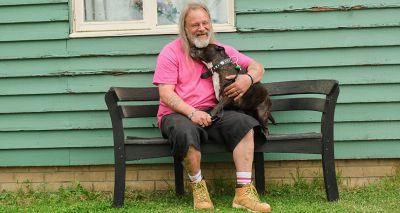
Dogs Trust marks milestone in homelessness support
Dogs Trust is celebrating a milestone in its charity work, as it supports its 10,000th dog owned by a person experiencing or at risk of homelessness.
Through its project, Together Through Homelessness, Dogs Trust has provided over 30,000 free veterinary treatments for dogs.
As well as obtaining free emergency and routine veterinary care for the dogs of those experiencing or at risk of homelessness, the project works with homelessness services to make them dog-friendly.
Dogs Trust provides the services with bespoke support and advice on topics including dog-friendly policies and dog behaviour resources. This includes starter packs to help dogs settle in to their new home.
The project also sees Dogs Trust distribute parcels to these services during the Christmas season. In December 2023, almost 2,000 parcels of dog supplies and toys were delivered to over 200 services across the UK.
Dogs Trust says that its work provides vital support for dog owners experiencing homelessness, who may have to choose between their dog and having somewhere safe to sleep.
In a survey, Dogs Trust found that 70 per cent of homelessness professionals had seen clients struggle to access support services because they have a dog. There were also 84 per cent of professionals which were aware of a case where someone had had to decline support because it would mean giving up their dog.
One charity supported by the service is Emmaus Cambridge, which provides those experiencing homelessness with a home, work opportunities and therapeutic support. With Dogs Trust, Emmaus Cambridge is able to support people like Lee, who lives there with his dog Lulu.
Lee said: “Lulu settled into the community really quickly, she loves being here and everyone makes a fuss of her.
“She enjoys a run around the fields which is typically followed by a long leisurely snooze.”
James Hickman, head of outreach projects at Dogs Trust, said: “We don’t believe anyone should have to choose between their dog and somewhere safe to sleep, which is why not only do we provide free health care to the dogs of those experiencing homelessness, but we also work closely with service providers to ensure pet friendly support is available at every step of the housing pathway.”
Image © Centre for Homelessness Impact
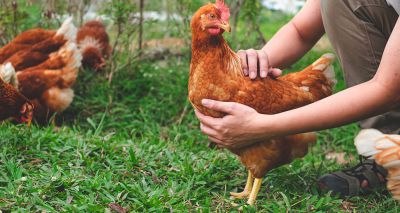
Poultry health course returns after five year break
The Pirbright Institute is relaunching its poultry health course after a five-year break.
Providing CPD training for veterinary surgeons, as well as technical staff and poultry managers, the week-long course will look at best practice in poultry health.
Experts from Pirbright, alongside guest lecturers from the poultry sector, will look at topics including enrichment, hatchery practice, and field investigations, as well as virological, bacteriological and parasitological poultry diseases.
Munir Iqbal, head of Pirbright’s Avian Influenza and Newcastle Disease group, will be providing insights into avian influenza and Ian Brown, who leads Pirbright’s Avian Virology Group, will be sharing his expertise on Newcastle disease.
The course will include demonstrations and lectures as well as practicals held at the University of Surrey.
Prof Brown said: “The course is specifically designed for those who work within the poultry industry and have a basic understanding of poultry health.
“By the end of the week, students will be able to recognise the clinical signs of key poultry diseases, perform a postmortem examination, and outline key diagnostic techniques including real-time PCR to detect viral genome, bacterial culturing, and microscopy.”
Prof Iqbal added: “In addition to recognising and understanding disease, and challenges to vaccination and vaccine failure, it will provide students with the ability to identify necessary biosecurity measures for a poultry farm, perform a field investigation, establish best practices for enrichment, and understand current industry issues including antimicrobial resistance.”
More details about the course, which will run from 24-28 June 2024, can be found on the Pirbright website.
Image © Shutterstock
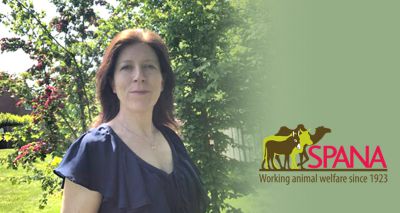
SPANA appoints interim chair of trustees
The Society for the Protection of Animals Abroad (SPANA) has announced the appointment of Marianne Davies as its interim chair of trustees.
Ms Davies, a senior human resources (HR) and change professional, was formally voted in to the the role by the SPANA Board of Trustees in March 2024.
She is currently global head of people services at pharmaceutical company GSK, where she has worked for much of her executive career. Her work with GSK brings extensive experience in HR and change, which will benefit the development of SPANA.
However she also holds an interest in animal welfare. Ms Davies has visited several of the countries where SPANA works, which has inspired her to support the welfare of working animals and their communities.
She first joined SPANA’s Board of Trustees in September 2021, and also works with SPANA’s People and Safeguarding Committee and its Centenary Committee.
In 2023, Ms Davies also fundraised for SPANA at the London Marathon.
She succeeds former chair of trustees Dr Mary-Lorraine Hughes, who recently resigned from the role. Dr Hughes had sat as chair of trustees since 2021.
Marianne Davies said: “During my three years as a trustee of SPANA, I have been inspired by the charity’s extraordinary support for working animals.
“I am excited and honoured to now be appointed chair of trustees at SPANA, during a time when the charity is significantly developing its work to meet the growing challenges it faces from issues such as rising global poverty, political instability, and climate change.
“SPANA’s strategy for 2023-27 outlines an ambitious vision for the future of the charity and how we will radically extend our reach and impact during these turbulent times. A number of exciting new initiatives are currently in development at SPANA, which will be truly transformative for working animals and the communities they so loyally support.”
SPANA’s Chief Executive, Linda Edwards, said: “We are delighted that Marianne Davies has been appointed as our chair of trustees at SPANA.
“Marianne’s commitment to working animal welfare and our plans for SPANA will help ensure the charity can transform the lives of working animals.”
Image © SPANA
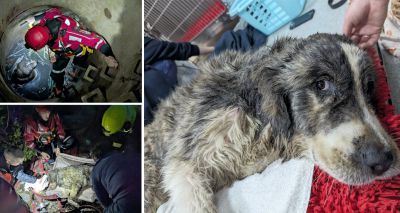
Dog saved from bottom of 15ft concrete shaft
A dog has been rescued after he was found struggling to keep his head above water at the bottom of a 15ft-deep concrete shaft in County Durham.
The grey and white crossbreed, who was at first mistaken for a badger, is now in the care of a local veterinary practice while attempts are made to find his owner.
Because of the initial mistake about his species, he has been named Badger.
He was discovered in the shaft on wasteland known as Phoenix Sidings in Stockton-on-Tees on Friday, 12 April. A dog walker spotted the lid to the shaft was partially open. Looking down it, he could see an animal which resembled a badger trapped in the water at the bottom, so he called the RSPCA.
Inspectors Steph Baines and Krissy Raine attended the call out. They used the zoom feature on a video to get a closer look at the animal and discovered that the badger was actually a dog. As the shaft was narrow and it was unknown how deep the water was, the inspectors called the Cleveland Fire Brigade for assistance.
A firefighter who was trained in water rescue entered the shaft in a flood suit. He comforted the dog and placed a fire hose around Badger’s chest and under his hips to create a make-shift sling. Once he was secure, the dog was slowly lifted out.
Inspector Raine said: “Badger was utterly exhausted when we finally reached him; if the man hadn’t found him when he did and we didn’t get him out so quickly, I have no doubt that he sadly would have drowned.
“He was up to his neck and could barely keep his head above the water. He was giving up in front of our eyes and it was a real race against time.”
After his ordeal in the shaft, Badger was underweight and couldn’t stand. It is thought he may have been stuck in the shaft for a number of days. His skin and the inside of his mouth had been blistered by the contaminated water, which has meant that he has needed to be tube fed.
The RSPCA is now looking to find Badger’s owner. As he was found wearing a leather collar and a black leather lead, it is believed he may have run off during a walk. He is microchipped, but the chip isn’t registered.
Inspector Baines said: “Badger is lucky to be alive and he’s really lovely; a friendly, gentle giant. There must be someone out there who is missing him and wondering where he’s gone.
“Please contact our appeal line on 0300 123 8018 if you know where he may have come from. We’d love to reunite him with his family.”
Image © RSPCA
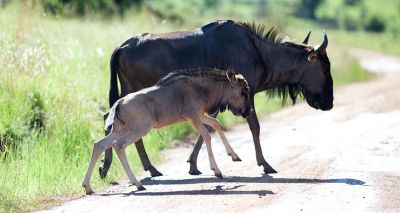
Wildebeest developing genetic issues from infrastructure
Roads and fences are disrupting historic migration routes.
Developing infrastructure across the continent of Africa could be affecting the genetic diversity of wildebeest, a study has found.
Researchers from the University of Copenhagen have suggested that the development of roads, fencing and farmland could be disrupting the historic migration routes of savanna animals, including wildebeest.
150 years ago, there were many wildebeest populations that were making great migrations across Africa. Since then, despite the total number of wildebeest remaining stable, local populations have seen significant declines.
Just 40 years ago, this reduced to just two large wildebeest migrations: the Great Migration of the Serengeti-Mara and a migration in the Kalahari Desert.
However populations of wildebeest in the Kalahari Desert, which sits largely in Botswana, have declined since the construction of fencing to protect cattle from migratory animals. Numbers of wildebeest in the Botswana’s Kalahari Desert dropped from roughly 260,000 in the 1970s to fewer than 15,000 in the late 1980s.
This has left the wildebeest in the Serengeti and Masai Mara as the only remaining large population of the species.
The annual migration of 1.3 million wildebeest through the Serengeti and Masai Mara has made the Serengeti a World Heritage Site, attracting thousands of tourists. Researchers say that plans for roads and rail corridors in the Serengeti-Mara could threaten this migration.
Although they can survive in non-migratory populations, wildebeest need to migrate to support their large numbers. Researchers believe that it is because of reduced migration that populations in Kenya and Tanzania have decreased.
The researchers are calling for key decision-makers to work on preserving old and natural migratory routes, not only used by wildebeest, but also other savanna animals.
They say that wildebeest migrations make them a vital part of many ecosystems, with their grazing keeping vegetation healthy and distributing nutrients. The wildebeest also serve as prey to predators, and carrion for scavengers.
Joseph O. Oguto, co-author and a senior statistician at the University of Hohenheim, said: “Therefore, it isn't just the iconic animal that we threaten when we prevent them from migrating - but many other species as well.
“And to that, we might add the enormous amount of tourism revenue that benefits governments and local communities."
The full study can be found in the journal Nature Communications.
Image © Shutterstock

Most adverse drug reactions unreported, study finds
Veterinary professionals are being encouraged to report suspected adverse drug reactions, after a new study found that the vast majority were not reported.
Researchers from the University of Liverpool reviewed more than 10,000 electronic health records from the Small Animal Veterinary Surveillance Network (SAVSNET). They found 827 cases of suspected adverse drug reactions, of which around 90 per cent went unreported.
Heather Davies, lead author of the study, explained: “It has long been thought that adverse drug reactions are under-reported. This work used real world evidence from first opinion practice to be the first publication that confirms this suspicion.”
Free-text clinical narratives of consultations stored in SAVSNET were screened for the phrases ‘adverse drug reaction’ and ‘side effect’.
The researchers then analysed the records to determine the seriousness and expectedness of the reaction, the suspected product, and whether it had been reported to the Veterinary Medicines Directorate (VMD) or the relevant marketing authorisation holder.
Most of the cases involved dogs and 70 per cent were listed as ‘expected’. Reactions which were not expected were more likely to be reported. The study also found that there was no correlation between the clinical severity of the reaction and how likely to was to be reported.
Dr Davies added: “As adverse drug reaction reporting rate is directly linked to the regulator's ability to mitigate safety issues, this paper is a call to arms encouraging all veterinary professionals to report suspected adverse drug reactions and regulators to make reporting quicker and easier.
“It also the highlights the promise that big real-world data sets hold in enhancing drug safety monitoring processes.”
The study, which received funding from BSAVA PetSavers and the VMD, has been published in the Journal of Small Animal Practice.
Image © Shutterstock
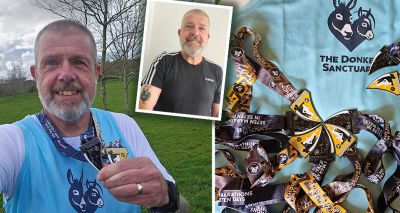
Fundraiser completes marathon challenge for equine charity
A 57-year-old man has raised over £1,400 for The Donkey Sanctuary, after running seven marathons in seven days.
Clive Poole, from Gloucester, completed the ‘Week At the Knees’ challenge for the charity, covering 183.4 miles in total across Buckinghamshire.
Mr Poole discovered the work of The Donkey Sanctuary by chance, after finding its Sidmouth sanctuary was close to where he was holidaying in Devon. He and his wife visited the sanctuary, and soon found a passion for donkeys and the sanctuary.
This, as well as his hobby of running, inspired Mr Poole to sign up for his seven-day marathon challenge.
The challenge did come with its difficulties, after his ankle gave way with just five miles left of his seventh marathon. Mr Poole continued on, covering the final distance at a walking pace.
Through this perseverance, Mr Poole became one of the 12 runners to complete the Week At the Knees challenge. He has since had a tattoo drawn to celebrate his achievement.
The completion of his seventh marathon for The Donkey Sanctuary brings Mr Poole’s total number of marathons to 90. This leaves him with just 10 more marathons to run to join the UK 100 Marathon Club.
Despite the hardships, Mr Poole says that he has made some friends for life from the experience.
He and his wife now visit the Donkey Sanctuary’s East Devon premises several times a year, stopping in to visit their two-year-old grandson’s adopted donkey Drizzle.
Rose Huxham, fundraising officer at the Donkey Sanctuary, said: “We offer Clive our heartfelt congratulations on completing such a mammoth task.
“It is such an amazing achievement to not only complete the seven marathons in seven days, but for raising such a great amount too, which will help us continue our work supporting donkeys at most in need.”
Image © The Donkey Sanctuary
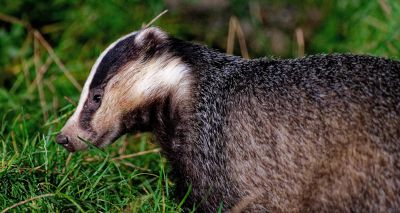
Number of badger TB vaccinations increases in England
The UK government has published the most recent statistics on the number of badgers vaccinated and culled in England as part of efforts to eradicate bovine TB.
The data for 2023 revealed that a total of 3,064 badgers were vaccinated by licensed individuals, an increase of just over 25 per cent compared to the previous year. The highest numbers of badgers vaccinated were in East Sussex (634), Cornwall (538), and Gloucestershire (514).
Government data also showed that 19,570 badgers were culled under licence in 2023. This is a decrease from the total of 33,627 badgers culled the year before. In total, more than 230,000 badgers have been culled since the policy began in 2013.
The government, which aims to eradicate bovine TB in England by 2038, is currently carrying out a public consultation on the next phase of its bovine TB strategy. Increasing the scale of badger vaccination is one of its aims, alongside the continuation of badger culling as an option.
A spokesperson from the Department for Environment, Food and Rural Affairs said: “Bovine TB is one of the most difficult animal health challenges the livestock sector in England faces today, causing considerable trauma for farmers, from the devastating impacts on their businesses and costing taxpayers over £100 million every year.
“Our strategy has led to a substantial reduction in this insidious disease with the lowest number of new bTB breakdowns in nearly twenty years.
“There are no easy answers, but badger culling has proved highly effective and needs to remain a part of our holistic approach alongside wider scale badger vaccination, improved cattle testing, continuing to help farmers improve biosecurity, and work towards deployment of a cattle vaccine.”
The government's strategy of culling badgers has long been opposed by some animal welfare organisations, including Badger Trust and Born Free.
Speaking after the publication of the latest data, Mark Jones, a veterinary surgeon and Born Free’s head of policy, said: “These sobering figures reflect the continuing slaughter of our iconic badgers across England, who continue to be made a scapegoat for decades of failure by the government and farming industry to control the spread of bovine TB in cattle.
“The evidence for disease control benefits from the slaughter are at best equivocal and disputed, and most of the badgers are being killed using a method that has been shown to result in unacceptable suffering for a significant proportion. At a time of crisis for wildlife and biodiversity, it cannot be right to treat our precious wildlife with such distain.”
Image © Shutterstock
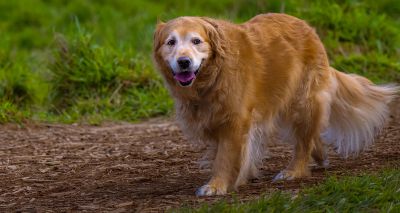
Dog owners think symptoms are 'old age', survey finds
Owners could be dismissing signs of serious health problems.
A survey from the University of Liverpool has found that many owners of older dogs are attributing clinical signs with their pet’s age.
This is preventing them from bringing their dog to a veterinary practice, despite the symptoms being signs of serious health problems.
Researchers surveyed more than 600 dog owners and more than 300 veterinary professionals from across the UK.
Dog owners were shown a list of 48 clinical signs, and asked if they had noticed any of them in their older dogs. They were then asked how urgent they considered it that they seek veterinary advice for that sign.
Overall the researchers said that dog owners were attributing serious changes in their older dogs with ageing, including slowing down on walks, being stiff on rising, and developing dental tartar.
This has meant that 78 per cent of owners said they would not take their senior dog to their veterinary practice if they noticed it was walking more slowly.
The survey also revealed that the majority of owners felt that a healthy senior dog should only be seen by a veterinary professional once per year. This contradicts veterinary advice, which suggests senior dogs should visit a veterinary practice every six months.
It identified that 14 per cent of owners would only take their dog to a veterinary practice if it became unwell, an approach which 98 per cent of veterinary professionals disagreed with. Sixteen per cent of owners of dogs of any age had not visited their practice in the previous year.
Furthermore, despite 92 per cent of veterinary professionals advocating yearly vaccinations, 28 per cent of owners’ dogs had not been vaccinated in the past year.
Veterinary professionals believe this may indicate a need for better education and communication between veterinary teams and their clients.
The data has been used to produce the BSAVA PetSavers Ageing Canine Toolkit leaflet and poster, for first opinion practices. Feedback is currently being collected to measure the impact of the toolkit on owners, veterinary teams and senior dogs.
Prof Carri Westgarth, co-author of the study, said: “Perceptions of dog owners and veterinary professionals can influence the preventive healthcare and treatment provided to dogs, especially at the senior life-stage, when chronic diseases become more common.
“The differences in opinion highlighted by our survey suggest that new educational initiatives and more effective communication are required.”
The full study can be found in the journal Frontiers in Veterinary Science.
Image © Shutterstock
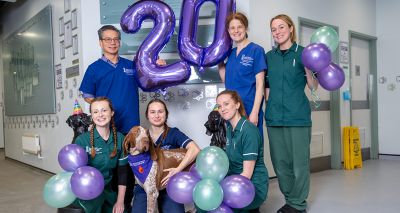
Blood donation service celebrates 20th anniversary
The Royal Veterinary College (RVC) is celebrating 20 years of its blood donation programme, which has helped save the lives of thousands of dogs and cats.
The service, which provides donated blood products to animals being treated at the RVC’s Small Animal Referral Hospital, was established in 2004. The first cohort of donors was made up of 19 dogs. Twenty years later, the service now has 150 dogs and 62 cats which regularly donate.
In addition to helping pets, the service has also been the focus of research carried out by the RVC into topics including the welfare of donors, using dog blood to help cats, and the storage of cat blood. This has led to the RVC becoming the only organisation in the UK to store feline blood products.
As it marks the anniversary, the RVC’s charity, the Animal Care Trust, has launched an appeal to raise £150,000 towards new purpose-built blood donor facilities. The planned facilities will include separate areas for dog and cat donors, as well as space for a laboratory to process and store the donated blood products.
Dan Chan, professor of emergency and critical care medicine at the RVC, said: “I've seen first-hand how blood donations help pets every single day and the ground-breaking clinical treatment and expert care that is provided at the hospital.
“Thanks to our special donors, blood transfusions have saved thousands of lives at the RVC over the last two decades and there are many more in need of help. Therefore, this appeal is essential in allowing us to expand and enhance our current facilities to ensure even more cats and dogs can be treated.
“Anything you donate will be hugely appreciated and help us to achieve this important goal.”
Donations to the charity can be made online.
Image © Royal Veterinary College
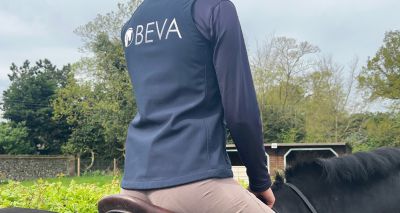
BEVA launches coaching for vets returning to work
The British Equine Veterinary Association (BEVA) has launched a new coaching programme to support veterinary surgeons returning to work after taking a break.
The Back in the Saddle programme will offer group coaching to BEVA members who are more than five-years qualified. It will complement the organisation’s Leg Up programme, which offers one-on-one coaching to veterinary surgeons in the first five years after graduation.
Designed in response to feedback from members about having periods of feeling lost or adrift in the career, particularly following a career break, BEVA hopes that the course will help improve recruitment and retention in the industry.
Held online, the sessions will provide a workshop-style environment in which participants can discuss their experiences and learn and share knowledge. The first session of the six-month programme will be on 11 June 2024, with monthly sessions scheduled until November.
The sessions will be led by trained coaches with experience of working in equine practice. Kate Blakeman, a clinical equine veterinary surgeon, is one of the five coaches and a co-founder of the programme.
Dr Blakeman said: “Returning to work from maternity leave was really challenging for me. Everything seemed to have changed despite returning to the same job, the same team and the same clients, and it was a big shock to see how much I struggled to deal with it all. The second time round it was no easier, just different!”
“My daily pattern had altered, and I was working fewer hours which meant I needed to organise myself and manage my expectations differently.
“I undertook a career coaching programme to help me figure things out properly, with impartial assistance, rather than trying to ‘wing it’. The skills I developed during this training helped me greatly and I hope Back in the Saddle will deliver similar benefits for those who need it.”
BEVA members can sign up for the coaching online.
Image © BEVA
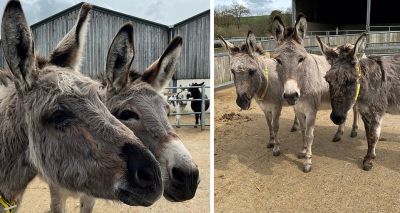
Four-year behaviour plan transforms frightened donkey
A frightened and defensive donkey has shown significant progress through four years of rehabilitation at the Donkey Sanctuary.
Fourteen-year-old Polly was admitted to the rescue centre in 2020, after her extreme defensive behaviour became too much for her owners to manage.
Soon after arriving at the sanctuary, Polly began to display her anxiety around people. When near to grooms, Polly’s ears would flatten and she would reverse at speed towards them while bucking.
The grooms assessed that Polly had experienced a past where she had had to use these behaviours to defend herself.
They believe she had then learned that extreme behaviour and physicality was the best way to avoid being handled.
During her stay at the New Arrivals Unit, provisions were made not only to protect Polly, but also to ensure the welfare of the grooms and behaviourists. Polly was also assigned a small area of the yard as a handling pen, where she would be unable to charge at the grooms.
Her behaviour remained unpredictable, which posed a challenged for her carers. After appearing calm, Polly would quickly become tense and start swinging her feet.
However, the team still believed that what Polly longed for was a human connection.
After making some progress at the New Arrivals Unit, she was moved to Axnoller Farm, where equine behaviourists continued to tackle her anxieties.
Here, in February 2023, she began a new behaviour modification programme, which has proven to be effective. So far this has included more than 40 short sessions, gradually introducing her to new experiences in a controlled environment.
Processes were broken down into several smaller steps, carried out across a number of weeks.
Polly will now allow a groom to run their hand down her front legs towards her feet, and can have her feet picked out in private. Where she would have previously become tense, she is now able to remain calm.
Although there is still progress to be made on Polly’s rehabilitation journey, the team are optimistic for her future.
Kerry Layton-Hill, an equine behaviourist at Axnoller Farm, said: “The team at Axnoller had so much trust in the process. Above all, they had the patience to see it through.
“Polly was a remarkably challenging donkey when she arrived in Dorset, and it is testament to everyone here that she can trust people again.”
Image © The Donkey Sanctuary
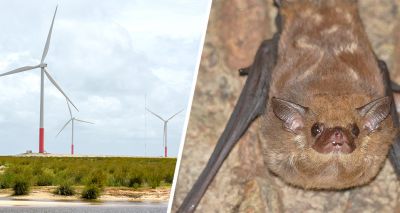
Wind turbine changes needed to save bats, scientists say
A global team of researchers have concluded that stricter regulations around the world are needed to better protect bats and other wildlife from wind turbines.
The calls come as the ecologists estimate that, in Germany alone, 200,000 bats are dying annually to wind turbine related causes.
Researchers say that bats are colliding with rotor blades and losing access to traditional habitats, posing a serious conservation issue. They are now calling for a global application of measures to reduce fatalities.
There are currently measures to prevent bat casualties being successfully implemented in the European Union (EU), Canada, and parts of the USA.
These measures prevent wind turbines from being built on ecologically valuable sites, such as diverse old-growth forests. They also ensure that wind turbine development is avoided within proximity of forest edges and water bodies, which may act as migratory corridors for birds and bats.
Additionally, low-yield periods of low wind speed at night are to be excluded from operation. This may cause a low yield loss, but prevents fatalities by more than 80 per cent.
‘Feathering’, where turbine blades are turned at an angle which turns them slower, is also recommended at times of low wind speeds.
However, although the scientific team believe these measures to be effective, they say there is work to be done to implement them on a global scale. The requirements are so far limited to the regulations of countries where bats are protected.
Worldwide, 131 countries have joined a United Nations convention to protect bats. The research team say that most of these signatories have implemented few or no protective measures for bats at wind turbines.
In the USA, only bats ‘threatened with extinction’ receive protection status. While EU member states protect all bats, the scientists believe the implementation of conservation measures remain inconsistent.
Meanwhile in Brazil, environmental licensing remains relaxed, leading to wind farms being constructed in areas with high biodiversity values.
The research team therefore believes that a global effort to implement measures to protect wildlife could protect bats and their place in global ecosystems.
Dr Christian Voigt, head of the department of evolutionary ecology and a bat specialist at Leibniz Institute for Zoo and Wildlife Research, said: “In Germany, for example, two thirds of wind turbines on the mainland – that is 18,000 turbines – are operated without curtailment to protect bats.
“Without appropriate regulations to ensure curtailment, an average of 14 bats per year die at a single wind turbine, and at some turbines more than 100 animals per year.”
Image © Shutterstock
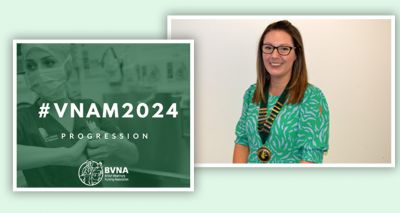
Veterinary Nursing Awareness Month set to return
Veterinary Nursing Awareness Month (VNAM) is set to return in May, marking the 20th year since the campaign began.
Led by the British Veterinary Nursing Association (BVNA), the campaign started in 2004 as a way to champion the veterinary nursing profession to the public and pet owners. Originally Veterinary Nursing Awareness Day, it expanded to a whole month in 2012.
This year’s theme is ‘Progression’, and will focus on the the diverse range of skills, abilities and career pathways in the veterinary nursing profession.
As part of the campaign, the BVNA will be publishing interviews in which RVNs who have been part of the profession for 20 years or longer speak about the progress they have been part of during their time in the role.
Lyndsay Hughes, BVNA president, said: “I am really excited to launch BVNA’s milestone 20th year of raising awareness of veterinary nursing, and VNAM 2024 follows this year’s presidential theme of ‘Progression’.
“This comes at a time when the veterinary nursing profession is standing taller than ever – our voices are being heard, we have the ability to follow our specific interests throughout our careers, and we are recognised as absolutely pivotal members of the veterinary team.”
The BVNA is running a VNMA competition, with the brief ‘Your #VNAM2024, Your Way’. The competition will celebrate the different ways in which practices, nursing teams, and individuals taking part in VNMA choose to educate the public about what veterinary nurses do and explain why the title ‘veterinary nurse’ deserves to be legally protected.
Suggested ideas include running an open day, creating a display for the practice waiting room, and delivering a social media campaign. Those taking part can share their activities with the BVNA to be in with a chance of winning a prize.
Ms Hughes added: “We absolutely recognise that it’s currently a challenging time for the veterinary profession – but we also fundamentally believe that veterinary nurses deserve to be championed. At such a busy time for us all, we hope that providing more flexibility over getting involved in VNAM this year means that everyone can find a way to take part.”
More information about how to join in with ‘Your #VNAM2024, Your Way’ competition can be found on the BVNA website.
Image © BVNA
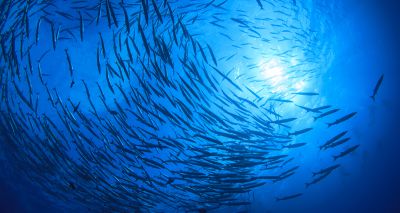
Climate change worse for marine life than forecast, study finds
A new analysis method of the effects of climate change on marine life has revealed the impact could be bigger than previously known.
The approach, conducted by researchers at the Royal Netherlands Institute for Sea Research, prevents seemingly contradictory results from individual studies from cancelling each other out when collated.
Marine biologists often calculate the effects of climate change by considering data from fish and invertebrate species together to develop an understanding of overall worldwide impact.
However this does not account for differing responses to climate change. This can mean that, if an element of climate change has a positive effect on one species but negative on the other, the effects are cancelled out in the analysis.
For example, snails were found to be eating more due to climate change while sea urchins were eating less.
Researchers say that both of these changes are significant to the marine ecosystem, affecting all other animals in the habitat. Turf algae, which would normally be eaten by sea urchins, grows more while kelp, eaten by gastropods, decreases.
Katharina Alter, lead author of the study, developed a new approach which would not cancel out contradictory results, but instead consider all results to determine how climate change affected fitness in an ecosystem.
Prior to this new approach, marine biologists acknowledged three ways that ocean warming and acidic seawater impacted the ecosystem: reduced survival rate, increased metabolism, and weakened skeletons in invertebrates.
The new method of analysis has since raised additional biological responses to climate change. Researchers say that the physiology, reproduction, behaviour and physical development of marine wildlife were also negatively impacted.
The research team says that mitigating the increase of carbon dioxide levels could reduce the negative impact of climate change on the biological processes of marine wildlife.
Dr Alter said: "Our new approach suggests that if ocean warming and acidification continue on the current trajectory, up to 100 per cent of the biological processes in fish and invertebrate species will be affected, while previous research methods found changes in only about 20 and 25 per cent of all processes, respectively."
The full study can be found in the journal Nature Communications.
Image © Shutterstock


